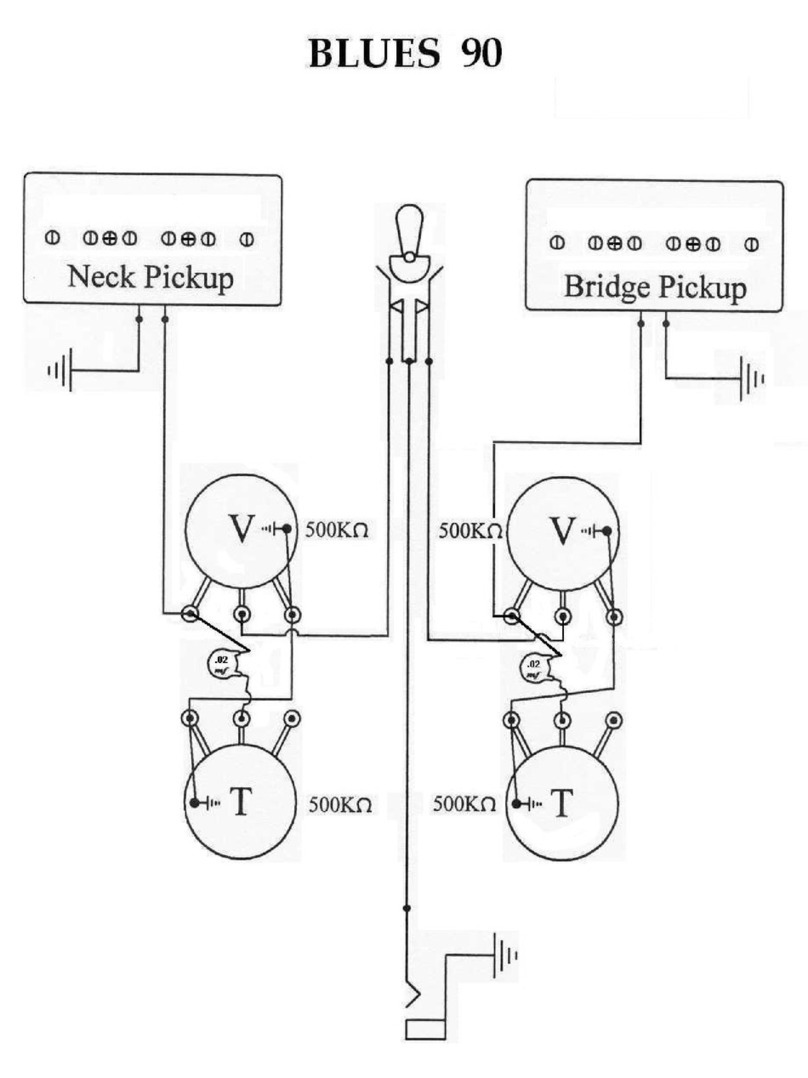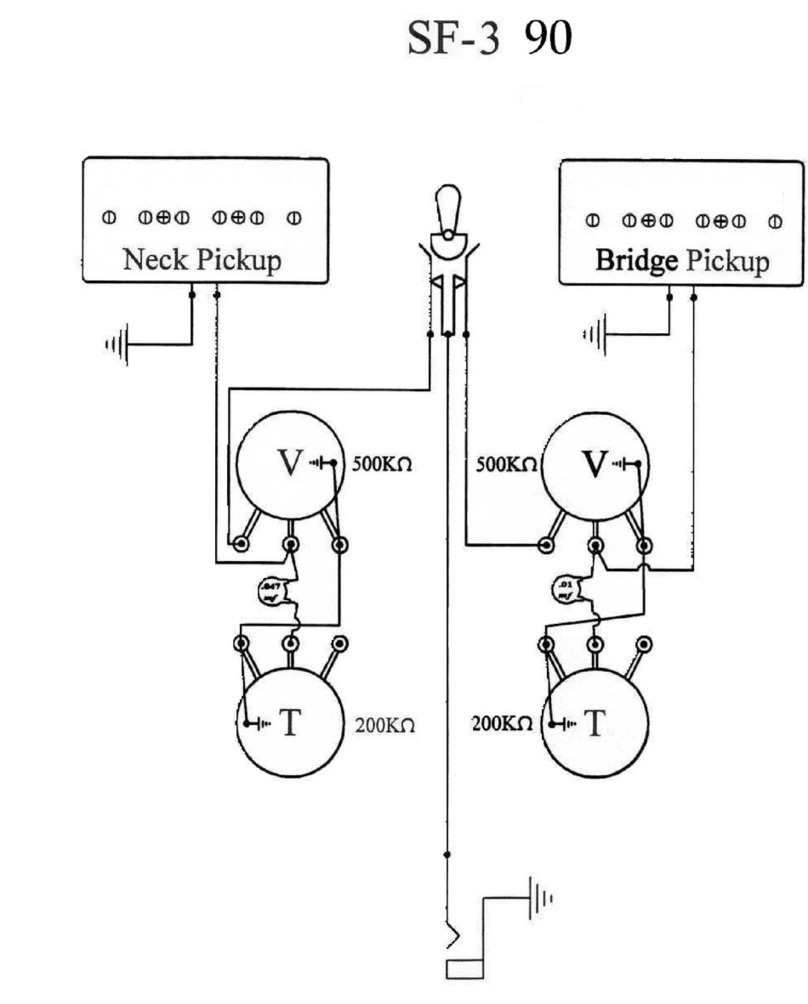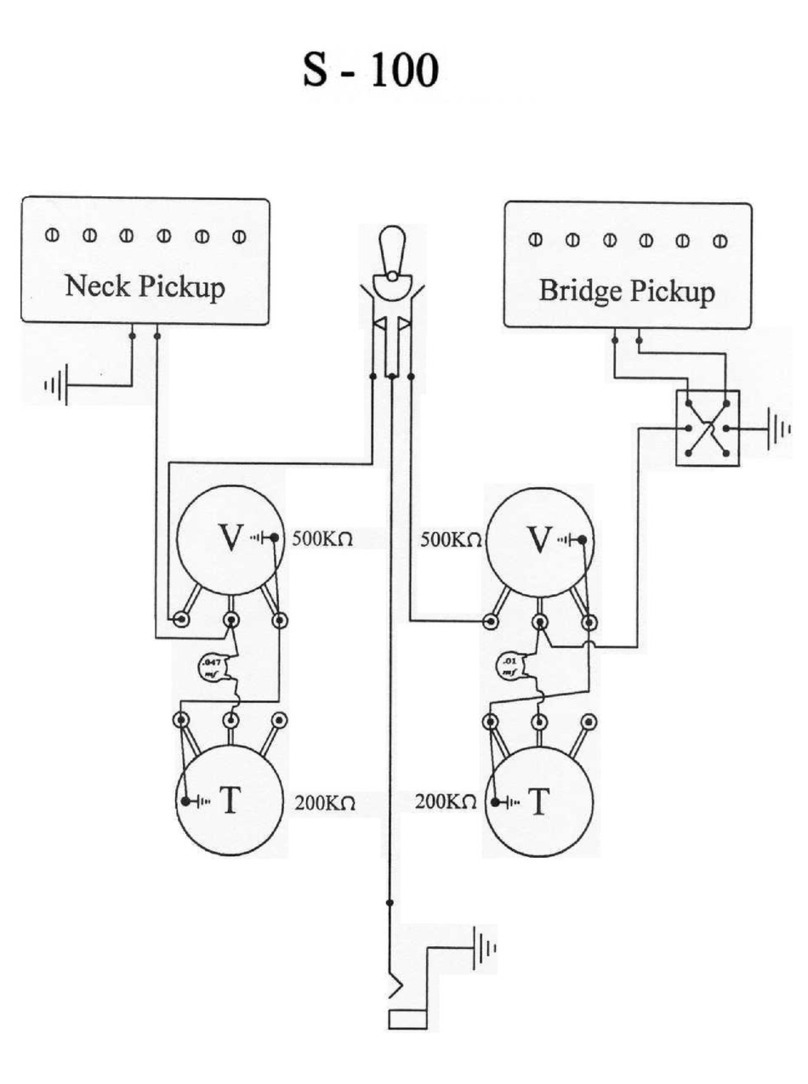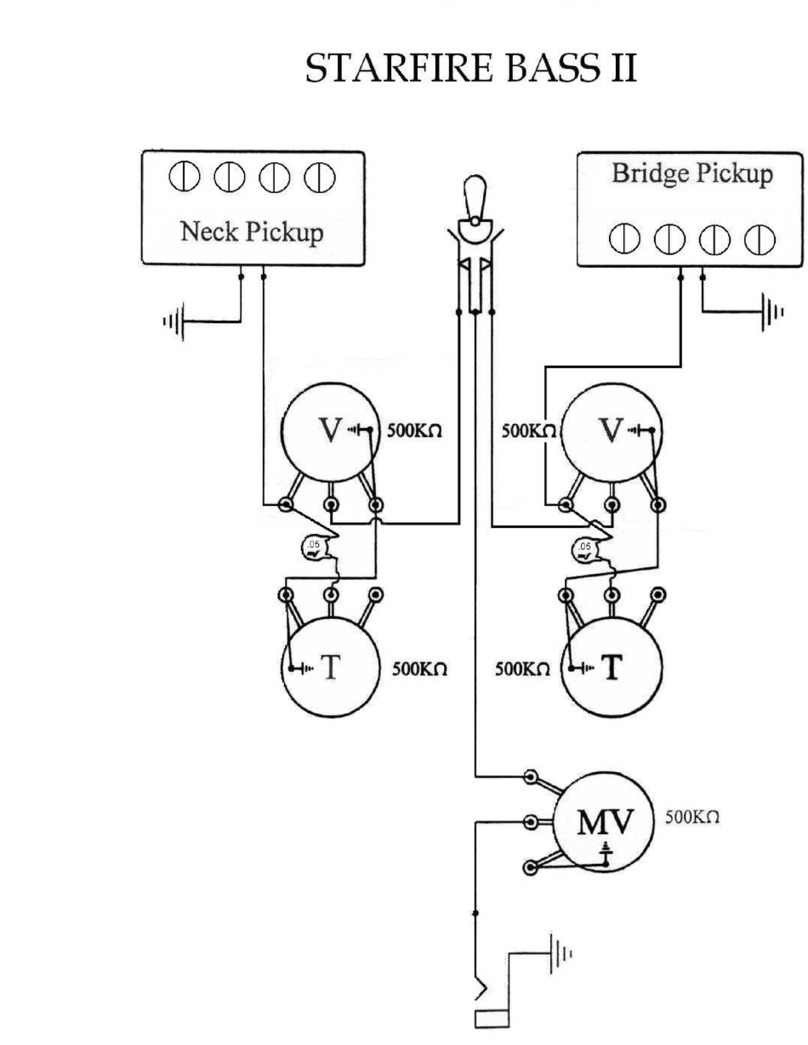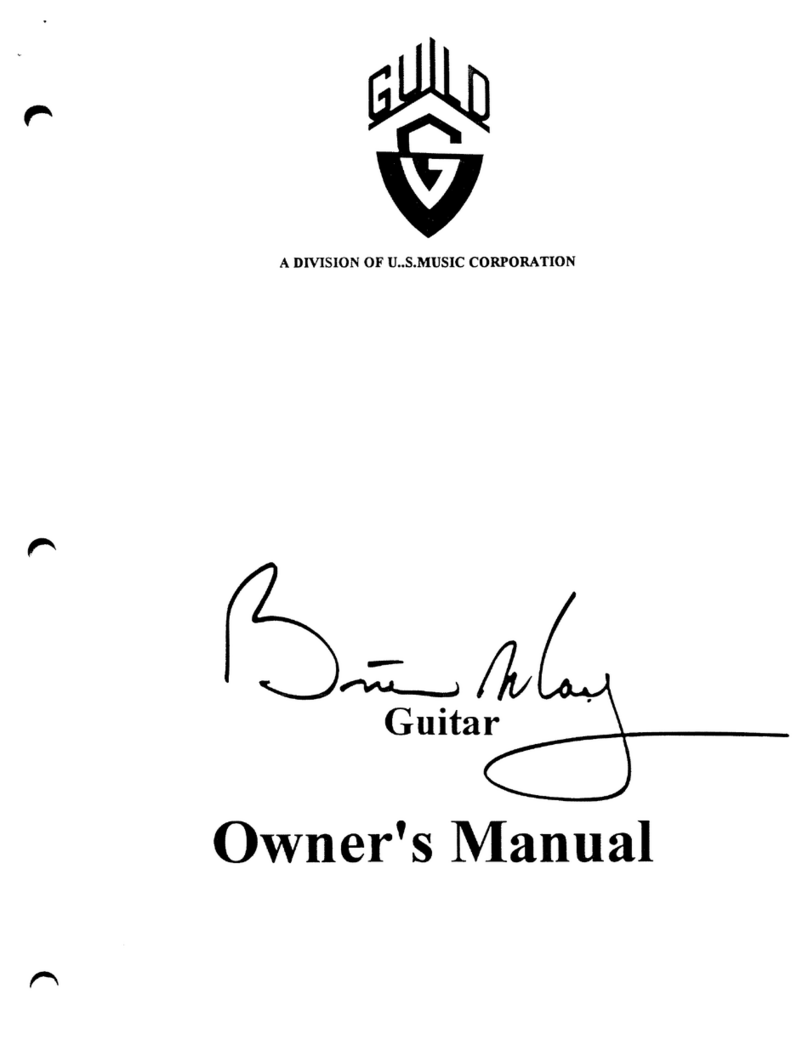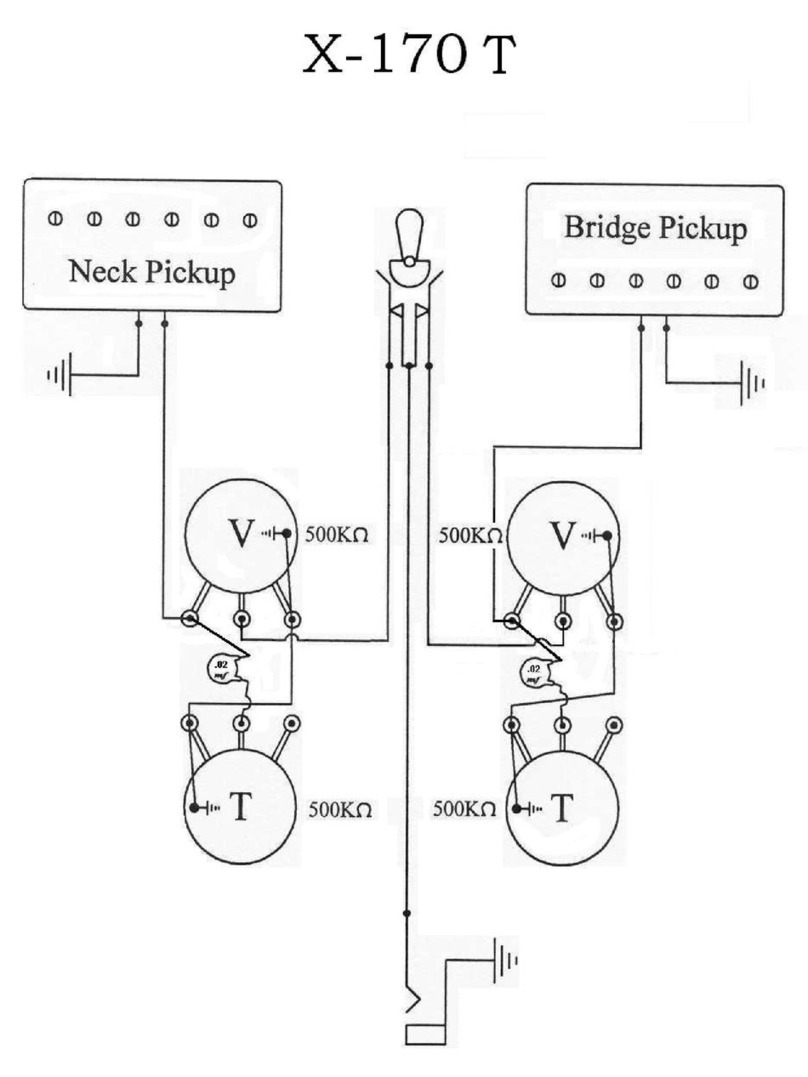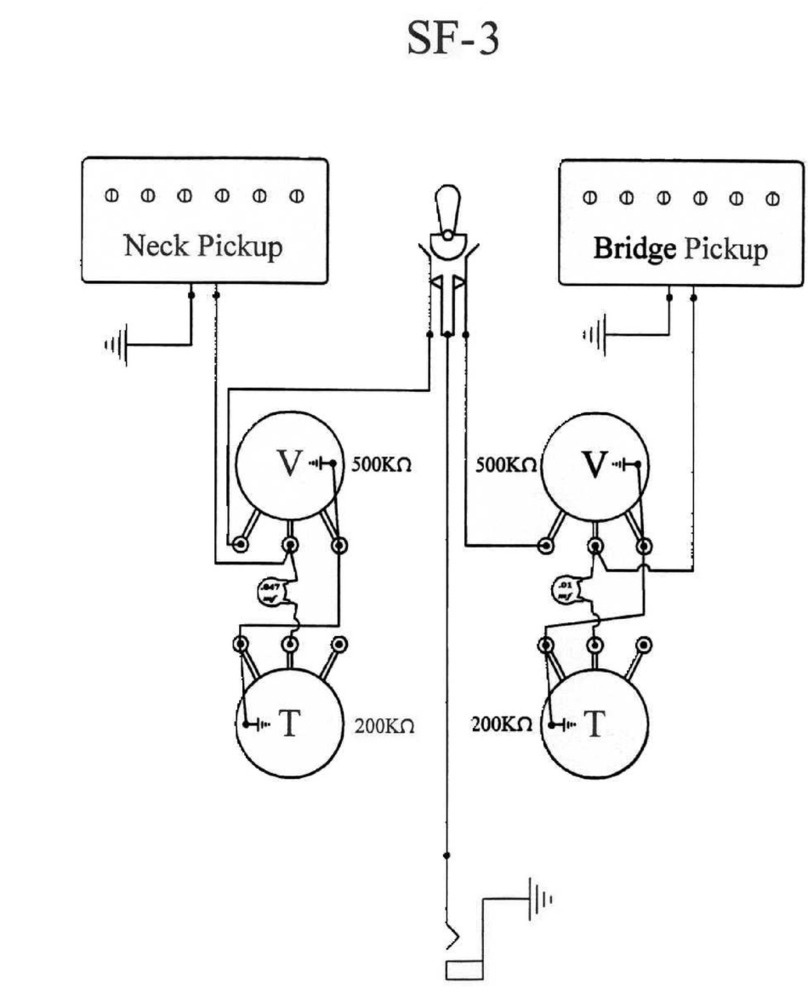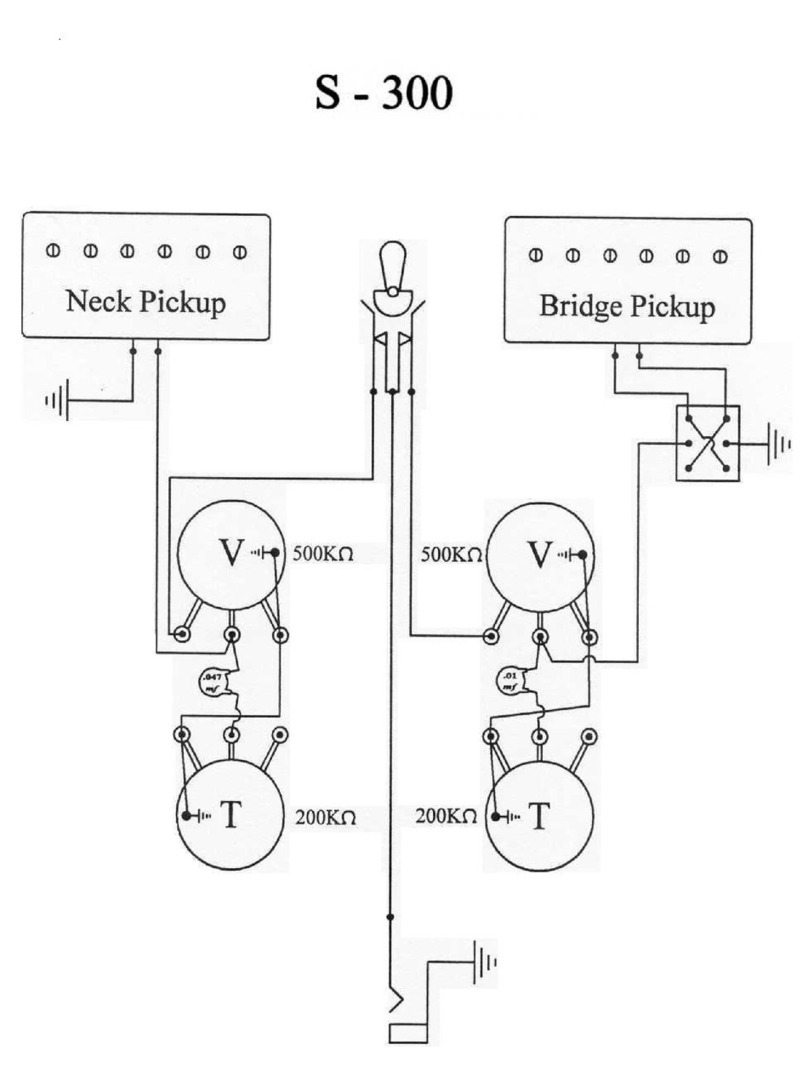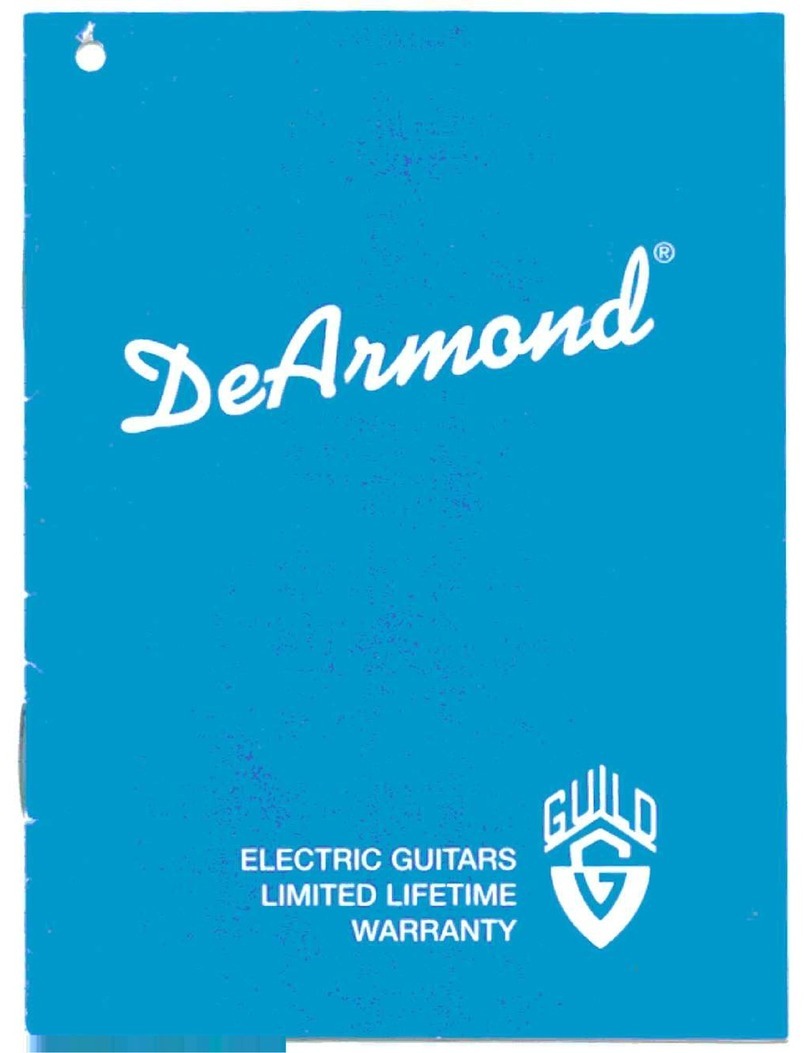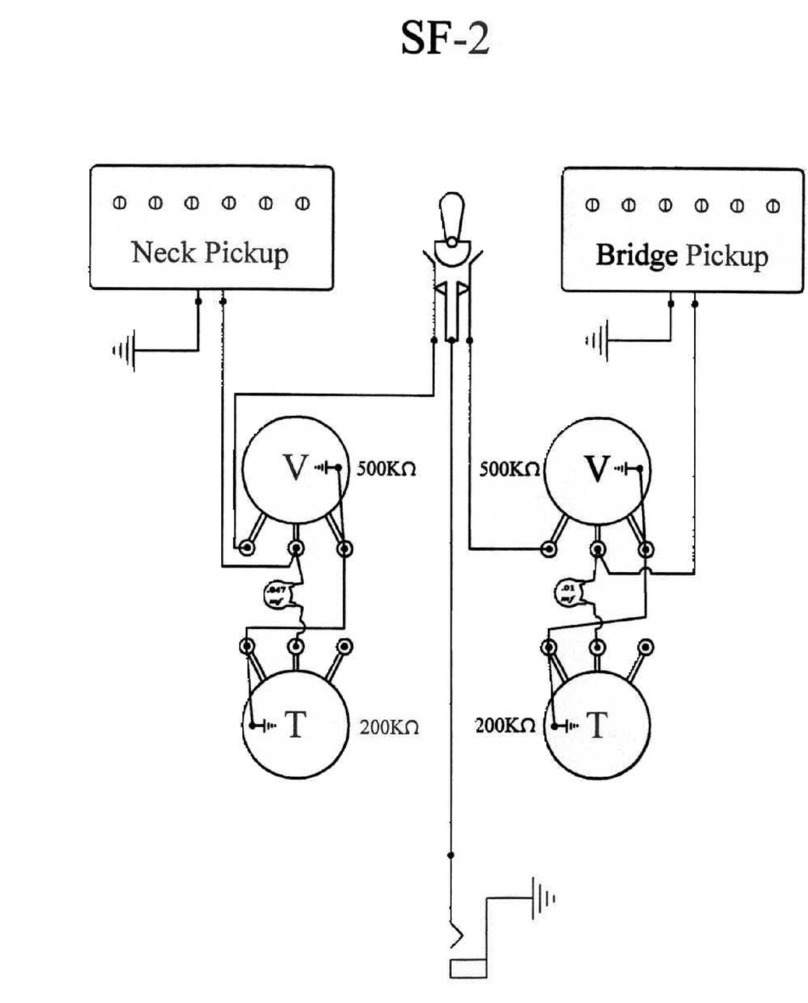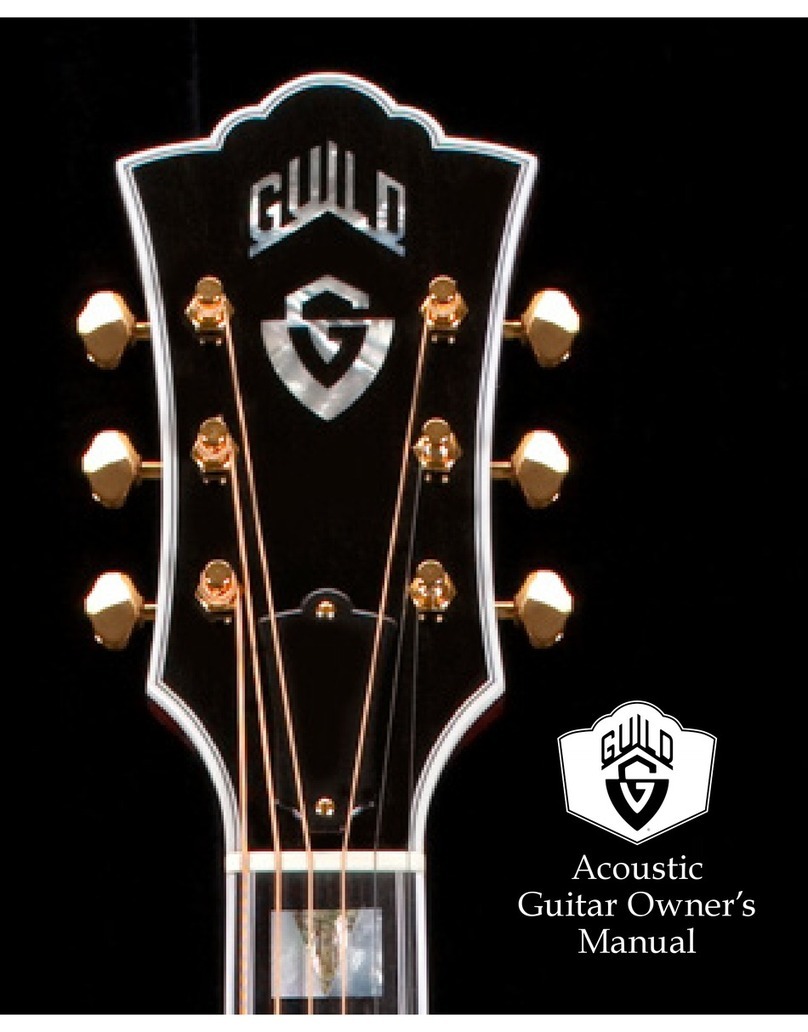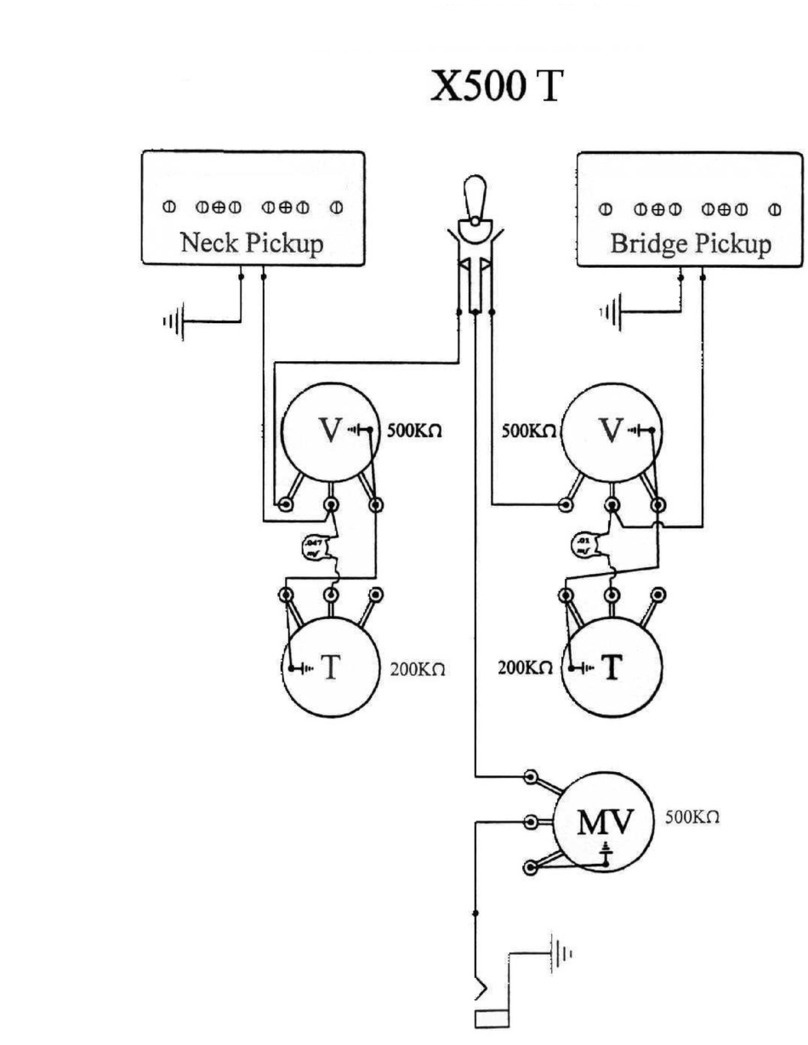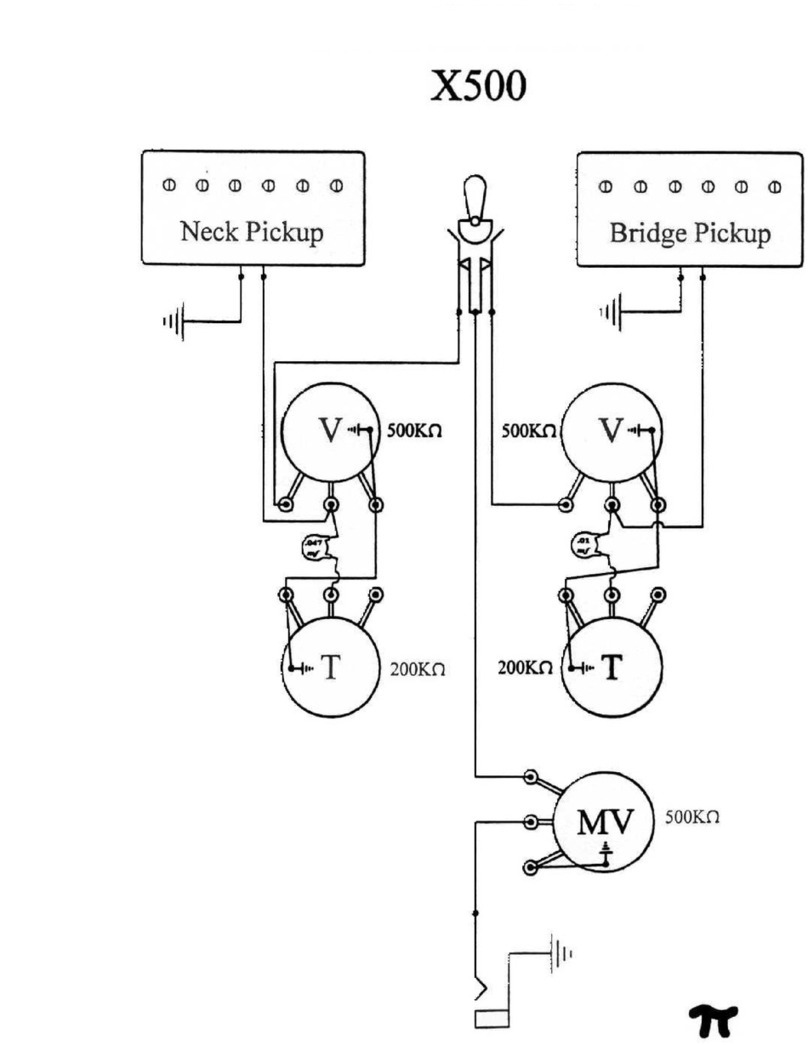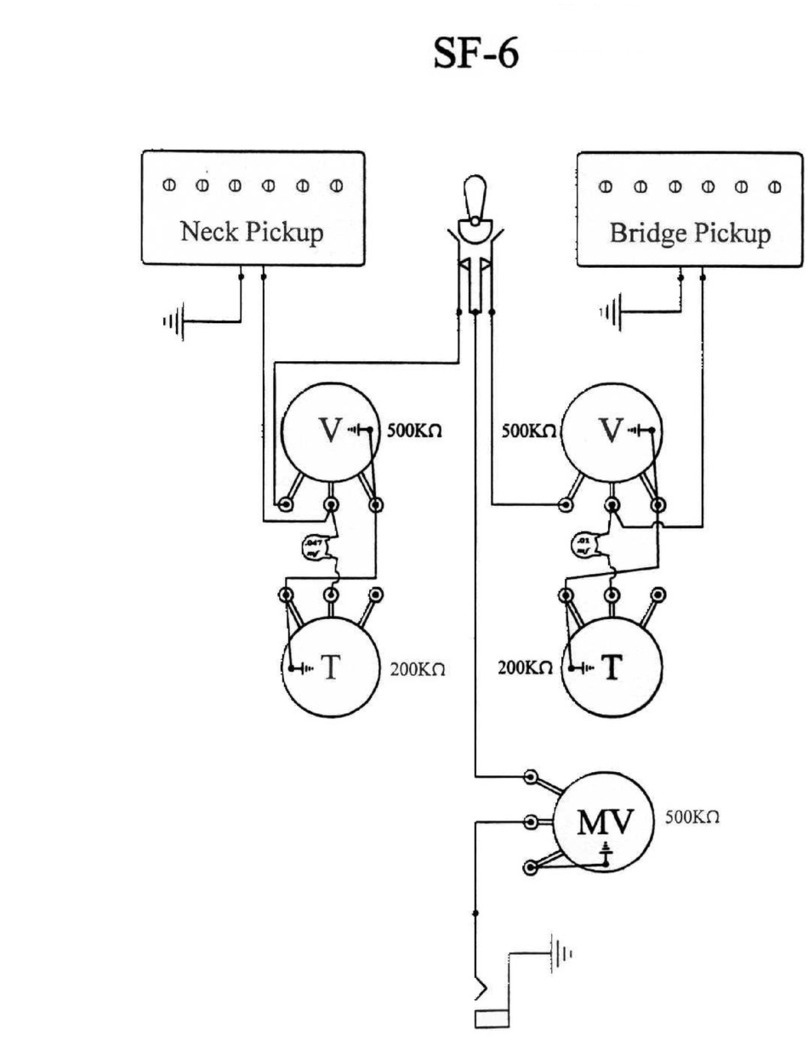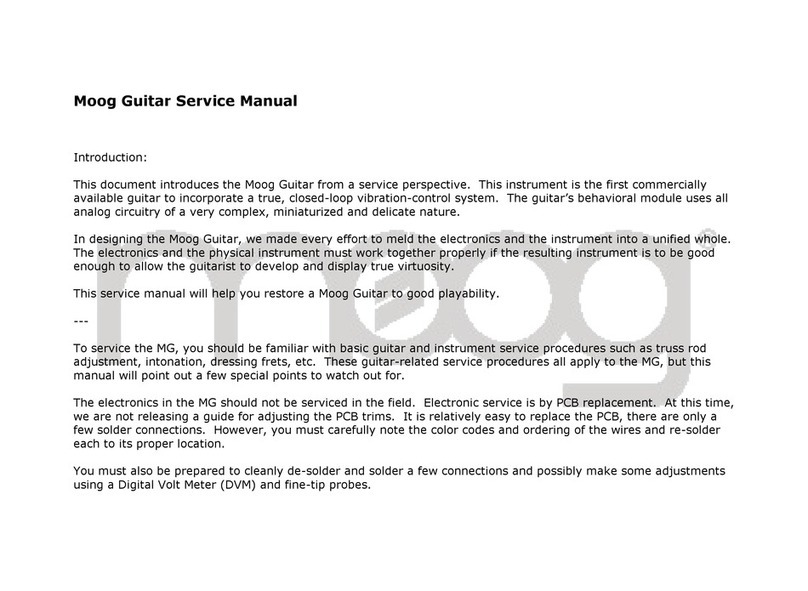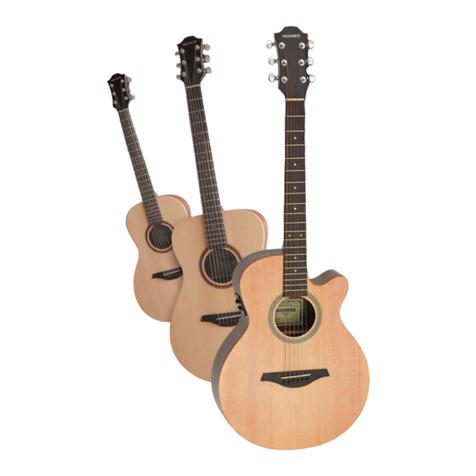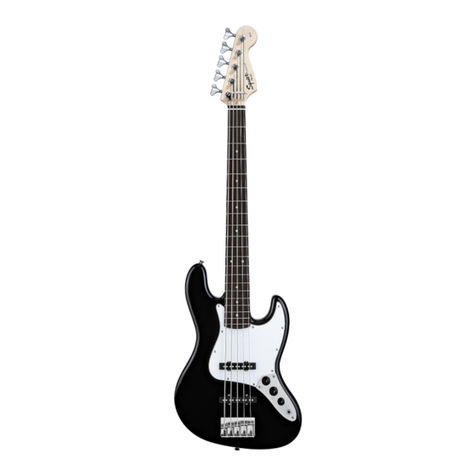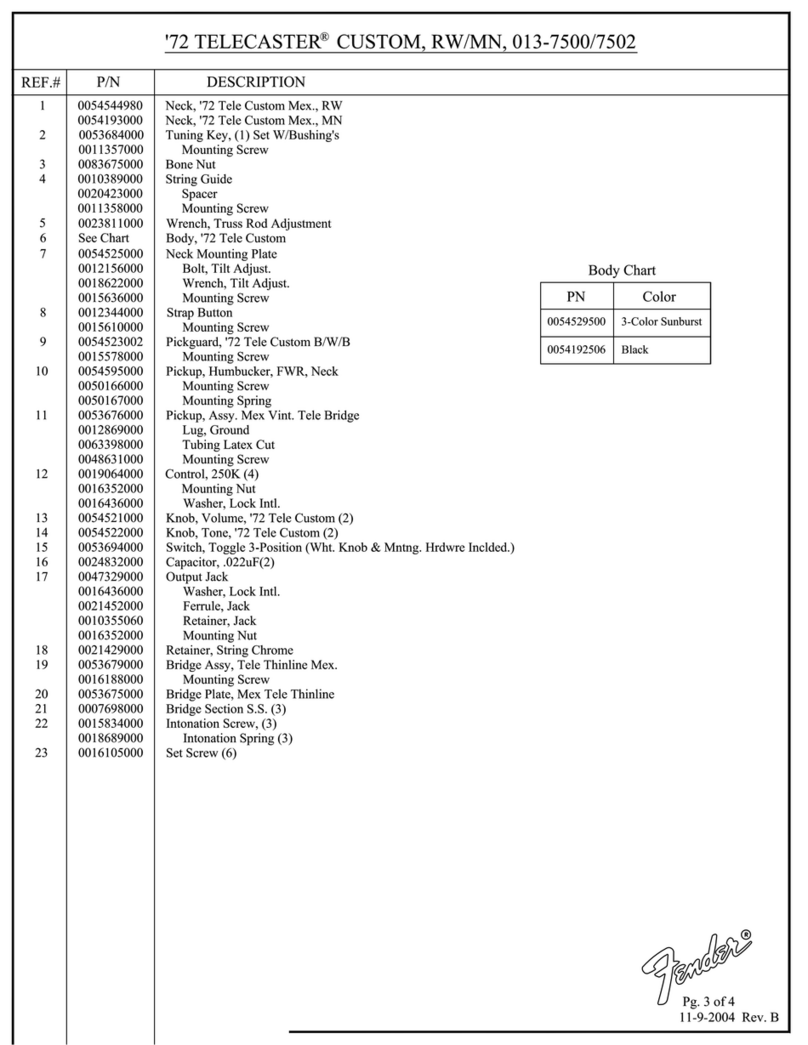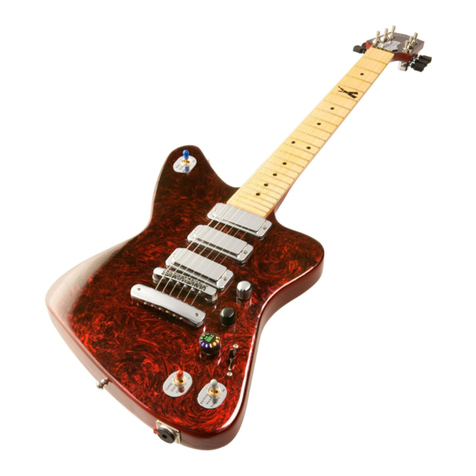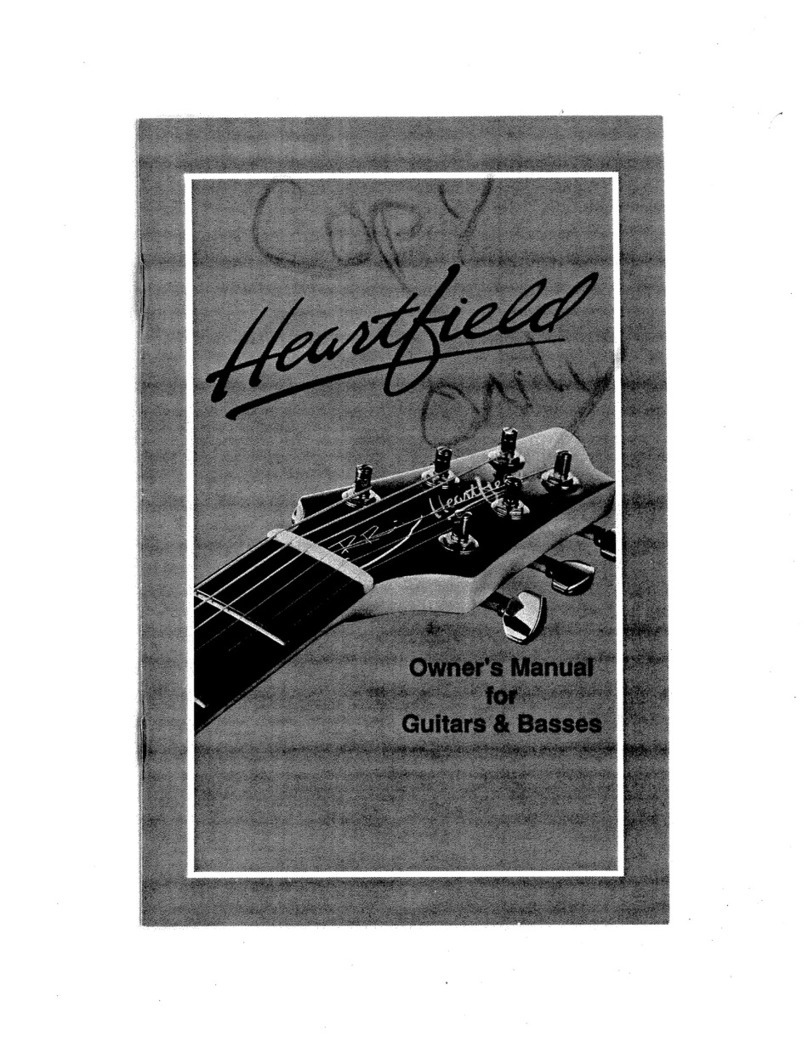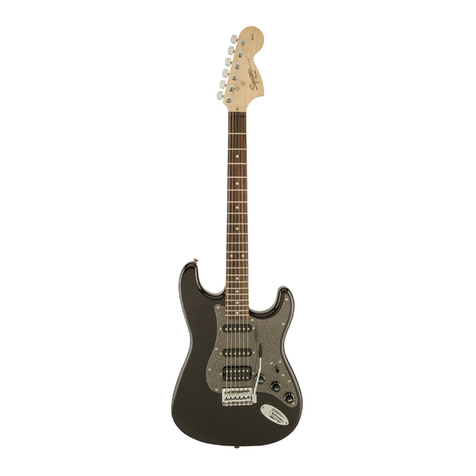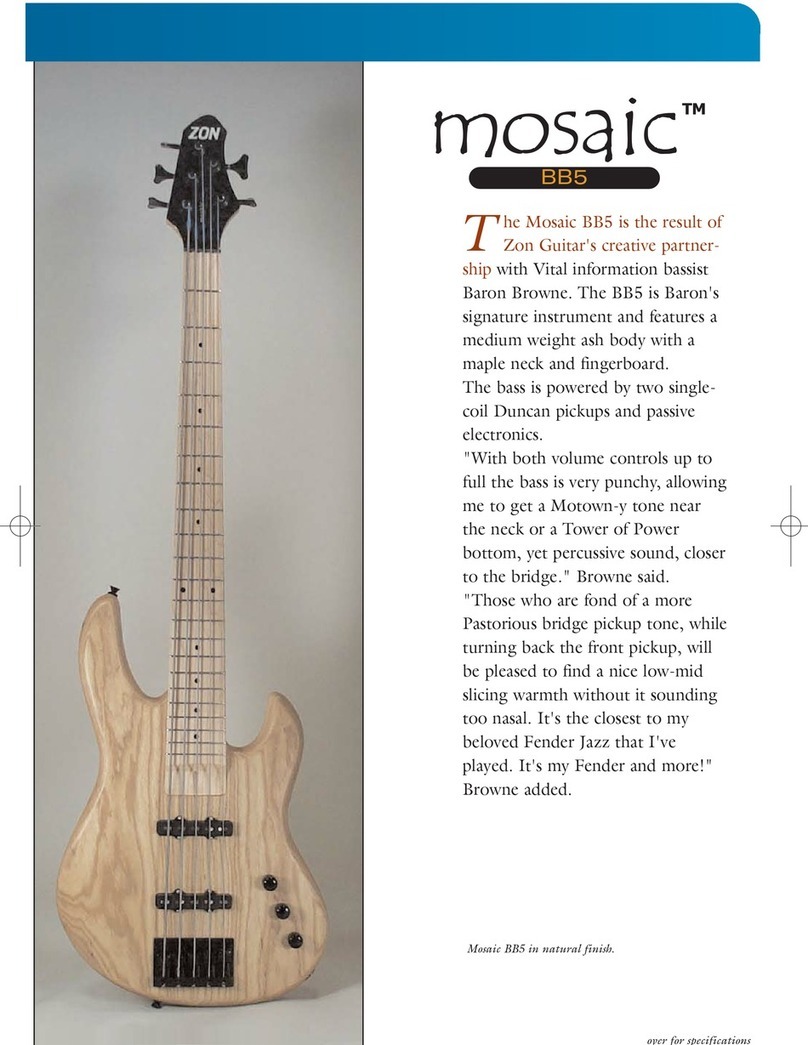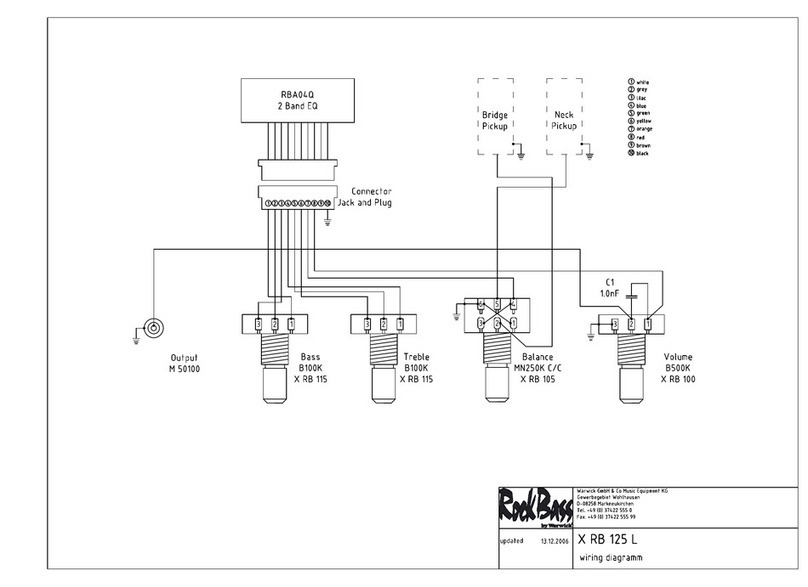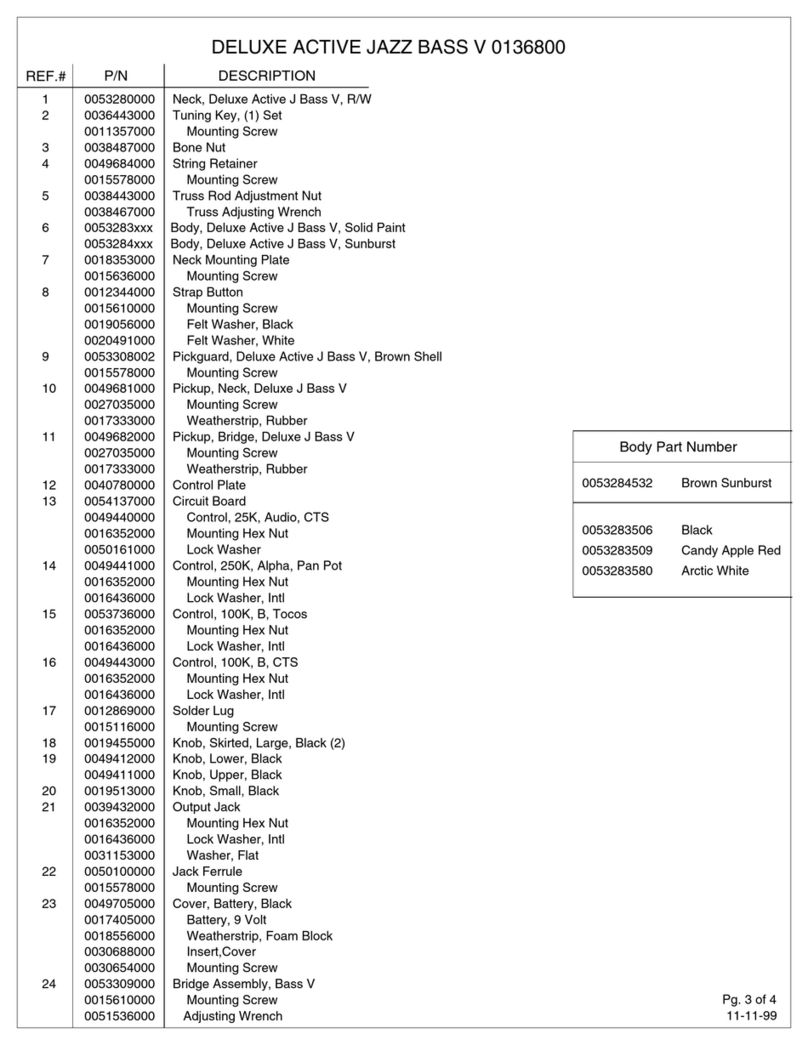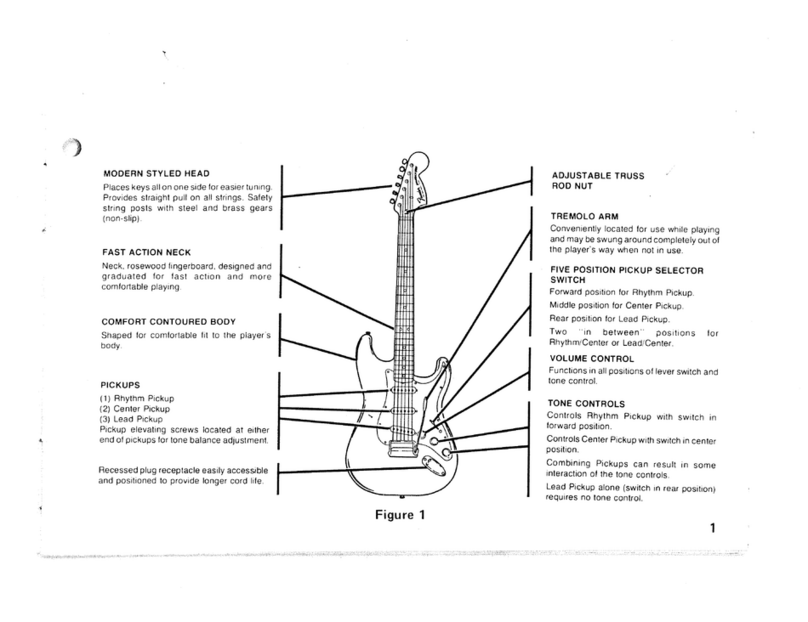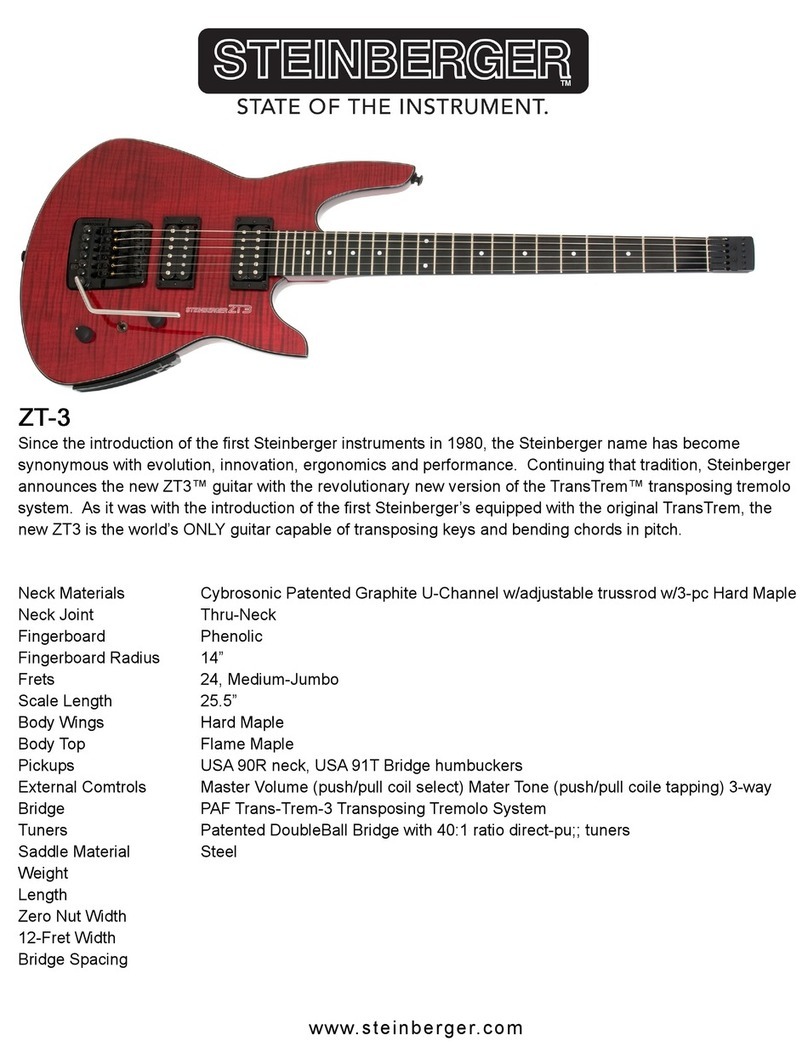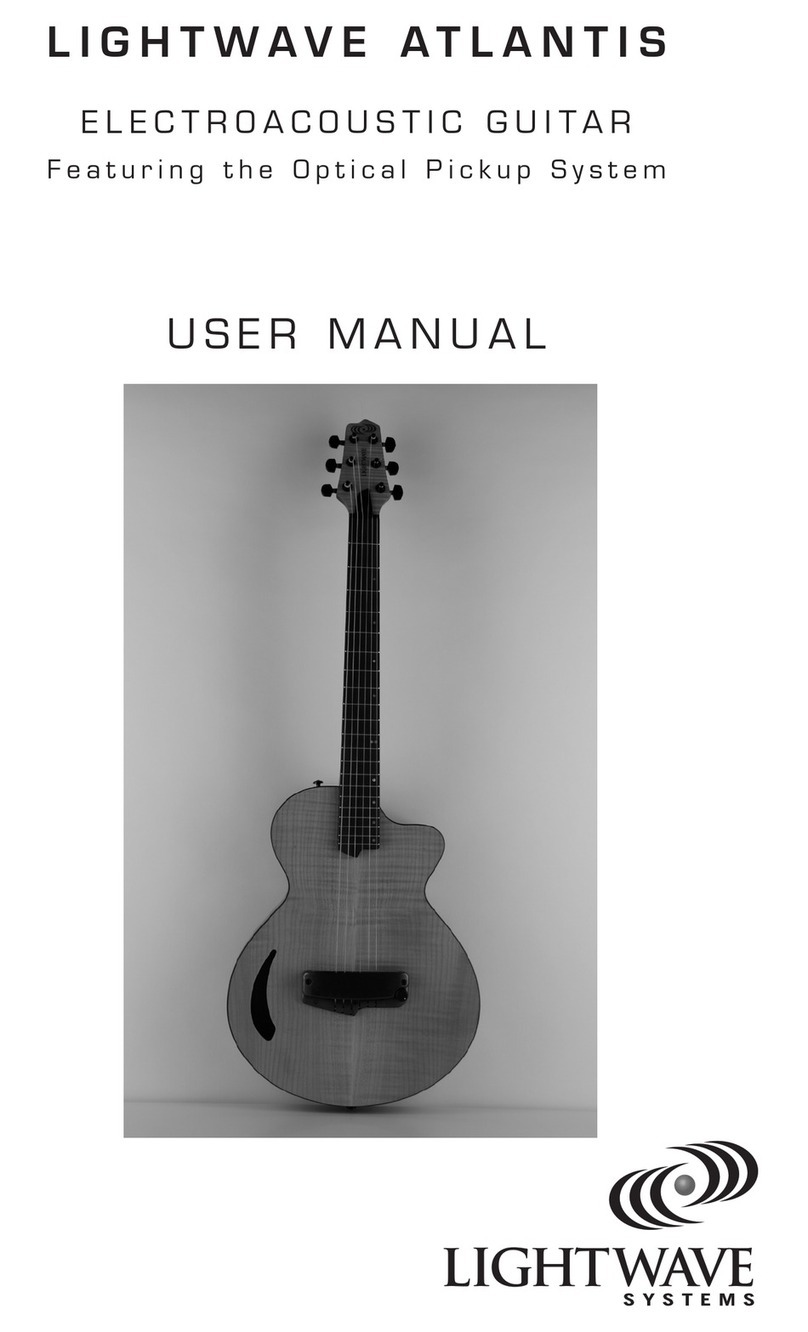
Cracks in the Wood
Cracks in the wood are typically caused by changes
in temperature and humidity. While a crack may
initially be alarming, if it is taken care of promptly it
shouldn't be a cause for undue concern. Cracks may
easily be repaired without compromising structural or
tonal integrity.
If the crack is in the top, near the bridge, loosen all
the strings to reduce tension, (which could potentially
exacerbate the problem), and have the crack repaired
as soon as you can. Please note: Cracks in the
wood, which occur as the result of exposure to
temperature or humidity changes will not be
covered under the Guild warranty.
Finish Checking
Finish checking, (very small splits in the finish),
usually occurs in winter and is typically the result of
suddenly exposing a cold instrument to the shock of
warmer temperatures.
All of the materials that make up a guitar expand
and contract with changes in temperature and
humidity. Wood expands as it warms, and it does so
faster than the finish. When this happens, the finish
may split and fracture in little lines over the wood.
Although it does not affect the tone of the
instrument, finish checking mars its appearance. By
avoiding sudden temperature and humidity changes,
you should not have any finish checking problems.
When an instrument has been brought into a
building after it has been out in the cold, allow plenty
of time for it to become acclimated to the new
temperature before you open the case. Please note:
Finish checks, which occur as the result of
exposure to temperature or humidity changes will
not be covered under the Guild warranty.
6
General Maintenance
Clean the instrument after each use, making sure to
wipe the fingerboard and strings, as well as any of the
plated parts, i.e. machine heads, pickups, etc. with a
soft dry cloth.
For gloss finishes, use a non-silicone based guitar
polish. For satin finishes, use only a soft dry
polishing cloth. For hand-rubbed finishes, use a soft,
slightly damp cloth and follow with a dry cloth.
When not playing the instrument, keep it tuned to
pitch and in its case. However, if you plan to store the
instrument for long periods of time, loosen the strings
a bit to relieve the tension, but do not remove them.
The natural oils in Rosewood and Ebony
fingerboards may dry out over time. Rough, exposed
fret edges are evidence of dry, shrunken wood. It is a
good idea to give your fretboard a drink of raw
linseed oil periodically to preserve its integrity and
natural beauty. Remove the strings first; then apply
the oil to a clean lint free cloth. Rub into the wood,
let it soak in, and then wipe to dry any excess oil.
Be careful when using vinyl, plastic or synthetic
leather guitar straps, guitar stands and wall hangers
using surgical rubber tubing, as these materials may
react with the finish of your instrument. Please note:
Damage caused to the instrument by the use of
non-Guild-approved polishes, cleaning materials
or accessories, will not be covered under the Guild
warranty.
7
